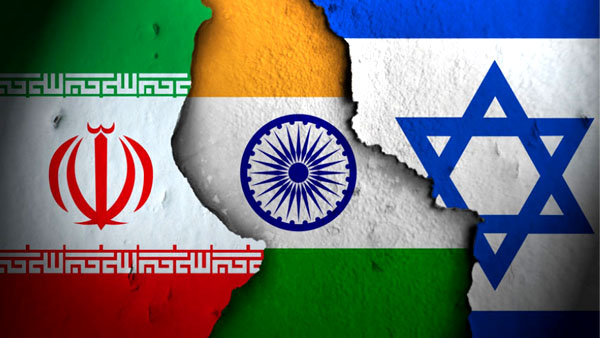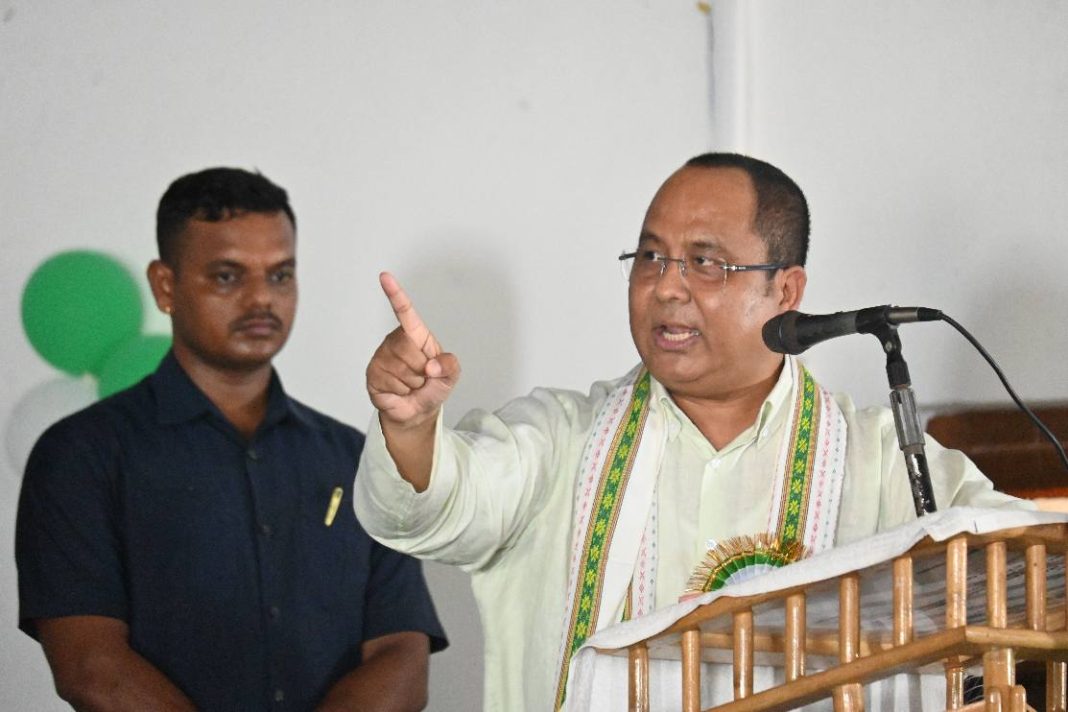By Dipak Kurmi
The fault lines in West Asia have once again deepened, this time triggered not by diplomacy gone awry, but by an overt military strike that risks plunging the region into a broader conflict. On June 13, 2025, Israel launched a coordinated strike on Iran, targeting multiple high-value military and nuclear sites. The attack, unprecedented in its scope, comes amid a fragile diplomatic thaw between Washington and Tehran. That thaw, now frozen, is a casualty of what appears to be a deliberate dual-track policy by the United States—one that preaches peace, but enables war.
It all began with a glimmer of hope. On March 25, U.S. President Donald Trump reached out to the Iranian leadership with a proposal for talks. The offer, tabled in Oman, marked a notable reversal from Trump’s first-term stance, which saw the United States unilaterally withdraw from the Joint Comprehensive Plan of Action (JCPOA)—a multilateral agreement designed to limit Iran’s nuclear capabilities under IAEA supervision. The JCPOA was flawed in the eyes of Israel and the Trump administration because it imposed only time-bound restrictions on Iran’s enrichment programme. But its collapse, engineered in Washington, reintroduced an unrestrained nuclear path for Tehran, setting the stage for future conflict.
The new dialogue, however tenuous, appeared to signal a shift—until the rug was pulled. Just days before the scheduled continuation of talks on June 15, Israel struck Iran on June 13 in a well-coordinated surprise attack. According to the New York Times, Iran’s top military commanders were caught off guard—some were reportedly asleep in their homes, others in meetings at bases that were soon engulfed in flames. The attack killed General Amir Ali Haji Saade and several other senior officers. It underscored not just Israel’s military precision but its deep penetration into Iran’s intelligence and defence infrastructure. This was not merely a show of strength; it was a message: deterrence through destruction.
Washington’s reaction to the Israeli strikes revealed more than reluctant acceptance—it revealed coordination. President Trump’s cryptic comment, “There’s more to come, a lot more,” betrayed strategic alignment between the two allies. The claim that Israeli jets had crossed multiple Arab airspaces—likely with tacit Gulf approval—further affirmed this coordination. While Saudi Arabia formally condemned the attacks, 200 Israeli jets flying deep into Iranian territory is not a logistical possibility without regional consent. Clearly, this was a coalition of the willing, acting under the veil of plausible deniability.
Iran’s retaliation was swift but restrained. Around 100 missiles were fired at seven locations in Tel Aviv, causing visible infrastructural damage, though with limited casualties. Israeli military headquarters were among the targeted sites, as videos and images confirmed. But Tehran’s promised ‘overwhelming response’ failed to materialise in full. The primary reason: Iranian missile launch sites and air defences had been significantly degraded by the Israeli strikes. Without them, Iran was unable to unleash a barrage powerful enough to pierce Israel’s formidable Iron Dome system.
What makes the situation more precarious is Iran’s current nuclear standing. The International Atomic Energy Agency recently confirmed that Iran possesses over 400 kg of uranium enriched to 60%. Given that a single nuclear warhead requires around 25 kg of uranium enriched to 90%, Tehran is theoretically capable of constructing at least ten nuclear bombs. This is the crux of Israel’s anxiety, and perhaps the real impetus behind the June 13 attack—to halt Iran’s march towards nuclear deterrence before it crosses the red line.
However, the risks of this pre-emptive doctrine are many. Iran is a vast country with mountainous terrain that allows strategic dispersion of its nuclear assets. Furthermore, despite deep dissatisfaction with the clerical regime, external aggression has historically united Iranians across class and ideological lines. The Islamic Republic, inheritor of a Persian legacy dating back to the Achaemenid Empire, draws strength from both history and the Shia ethos of martyrdom. An Israeli assault is unlikely to cow the Iranian spirit—it may instead galvanise it.
This is where President Trump’s approach reveals its flaws. His preference for negotiating from a position of pressure may serve well in business, but it fails in a region defined by centuries of cultural, religious, and historical complexity. By openly endorsing Israel’s military action, Trump has neutralised his potential as a credible broker. Even if the aim was to compel Iran to return to the negotiating table under duress, the consequence has been Tehran’s withdrawal from the June 15 talks and a strategic reassessment of its nuclear posture.
The only major powers to denounce Israel’s strikes were Russia and China. India, following its traditional path of diplomatic equidistance, called for restraint and peaceful dialogue. But this neutrality masks growing discomfort in New Delhi. With over eight million Indian nationals living across the Gulf, and vast energy and trade linkages in the region, India’s stakes are too high to remain indifferent. The India-Middle East-Europe Economic Corridor (IMEC), a flagship connectivity initiative, hinges on stability in West Asia. The continuation of hostilities between Iran and Israel threatens to derail these prospects.
Moreover, India’s perceived alignment with Israel—accentuated during Operation Sindoor against Pakistan—has complicated its strategic positioning. In trying to balance between Sunni Arab states and Israel on one side, and Iran on the other, New Delhi risks being seen as partisan in a polarising conflict. That could jeopardise not only its economic ambitions but also its diplomatic credibility.
Iran’s current strategy appears cautious, but that may not hold. Unlike Pakistan during Operation Sindoor, which quickly sued for a ceasefire after its air defences were overwhelmed, Iran has refrained from retaliating against U.S. assets. But as its conventional defences are whittled down, the temptation to restore deterrence through nuclear armament will rise. This is precisely what Israel hopes to prevent. Yet, the paradox remains: the more Iran is pushed, the closer it may move towards building the bomb.
Israel’s Prime Minister, Benjamin Netanyahu, has made no secret of his desire for regime change in Tehran. This would be the optimal outcome for both Tel Aviv and Washington—removing the last major Shia counterweight in a region where Sunni Gulf monarchies, Israel, and now even Syria’s post-Assad scenario are coming under the same strategic umbrella. But regime change, if it comes at all, will not be swift or bloodless. More likely, it will be accompanied by waves of instability, refugee crises, and the radicalisation of marginal groups. History shows us that war begets not peace, but cycles of violence that are difficult to break.
Finally, the question looms: will Russia or China now accelerate Iran’s path to nuclear weapons as a means of strategic balancing? Tehran may not yet have the bomb, but the window for prevention is narrowing. The region is at an inflection point. The U.S. under Trump seeks to shape the outcome indirectly, via proxies. But this might prove a more dangerous gamble than past direct interventions.
As Israel and Iran edge closer to open war, the world watches nervously, knowing that in this high-stakes contest of nerves and narratives, one misstep could ignite a wildfire across the Middle East. The diplomatic clock is ticking—and the silence it keeps may prove more ominous than any war cry.
(the writer can be reached at dipakkurmiglpltd@gmail.com)




